1. Where can you charge an electric car?
Before looking at how you charge an electric vehicle, it’s first important to understand where you can charge it. Unlike gas cars, EVs can technically be charged pretty much anywhere with a power outlet.
In practice, though, there are a number of locations where you might find a dedicated EV charging station, from public parking garages to shopping centers, workplaces, and even the home.
Let’s have a look below at the five most common EV charging locations.
EV charging at home
By far, the most popular EV charging location is the home, with over 64 percent of EV drivers regularly charging there. This is hardly surprising – home charging is the most convenient and usually also the cheapest place to charge an EV.
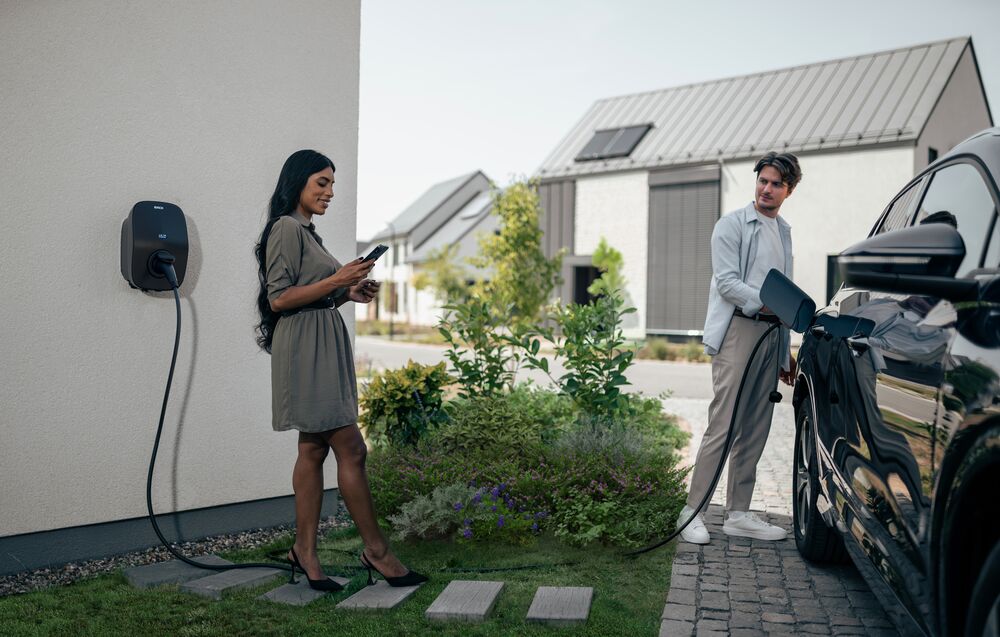
Instead of having to go out of your way to find a charging station, you can simply plug in your EV when you come home from work and wake up to a fully charged car. And because you don’t have to pay any surplus on top of your electricity tariff, charging at home is almost always cheaper than using a public charger.
EV charging at the workplace
While charging at home is undoubtedly the most popular, the workplace is not far behind, with 34% of EV drivers regularly charging their cars at work. Given that other than the home, people spend most of their time at work, charging at the office is a compelling way to make use of their time.
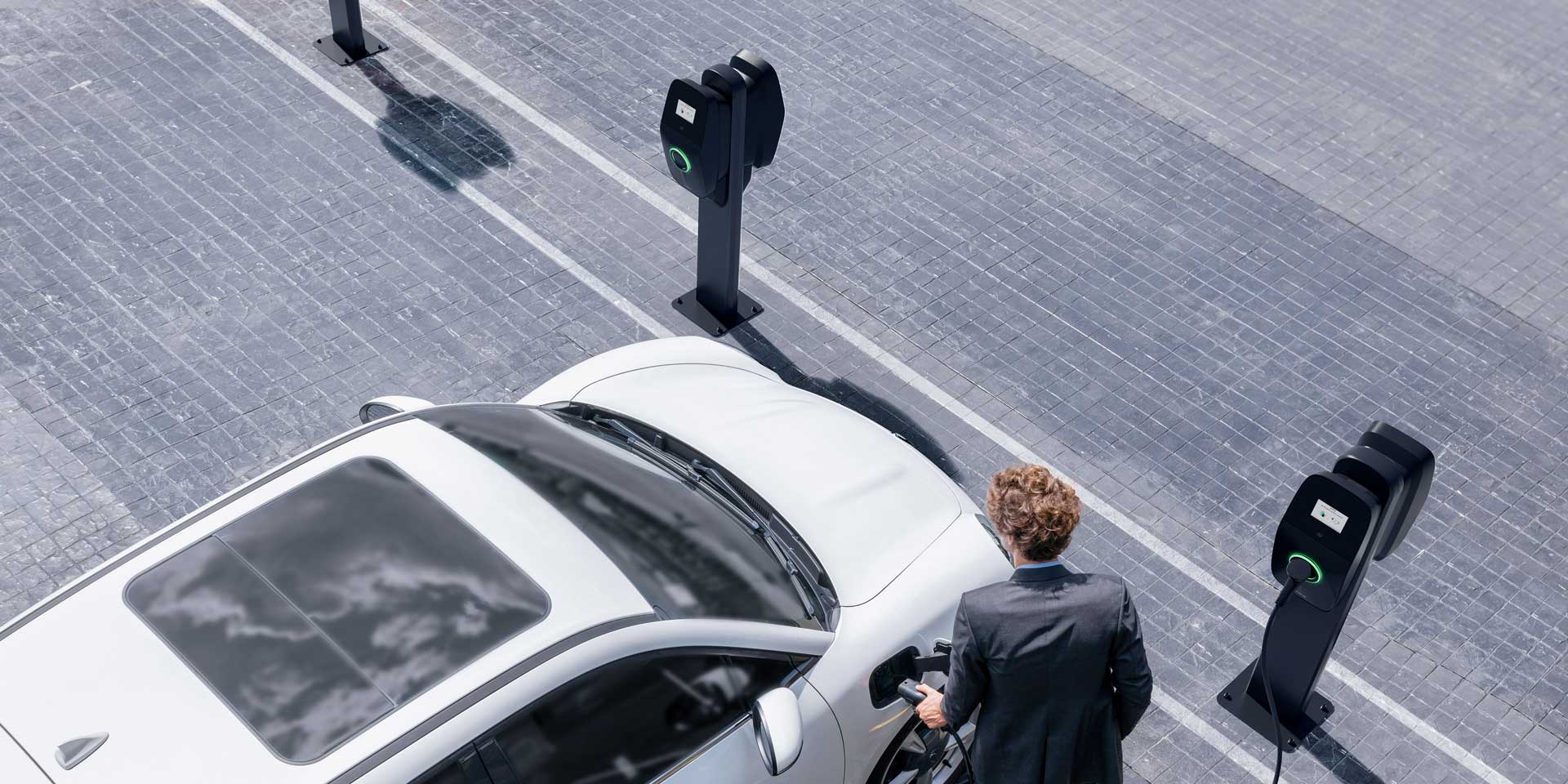
That said, many workplaces are still to offer suitable EV charging facilities for their employees, with 65% of EV drivers saying their workplace doesn’t have enough charging options. This explains why 27% of EV drivers would like to charge at work, but aren’t able to.
EV charging at gas stations
While a gas station may be the last place you think of seeing an EV, their convenient location along major roadways actually makes them excellent charging places, especially for fast charging. It makes sense, then, that 29% of EV drivers regularly charge their vehicles at gas stations, plus a further 1 in 5 would do so if they had the option.
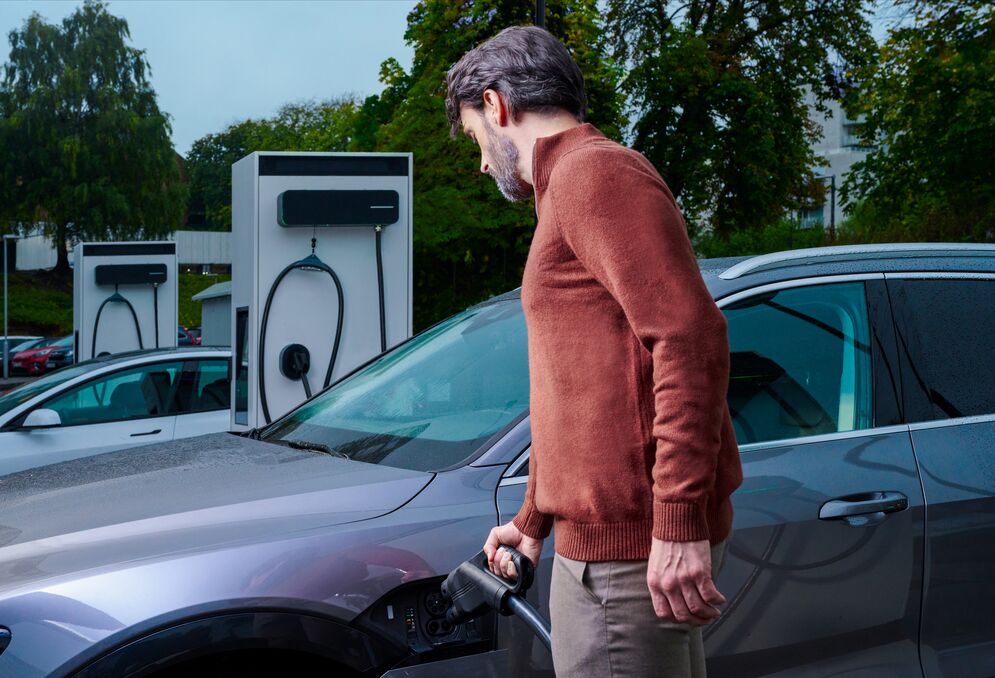
EV charging at retail and hospitality facilities
Unlike gas-powered cars, where filling up the tank requires an intentional visit to a gas pump, EVs open up what’s called opportunistic charging, or the ability to charge at a location because it offers charging possibilities rather than out of pure need.
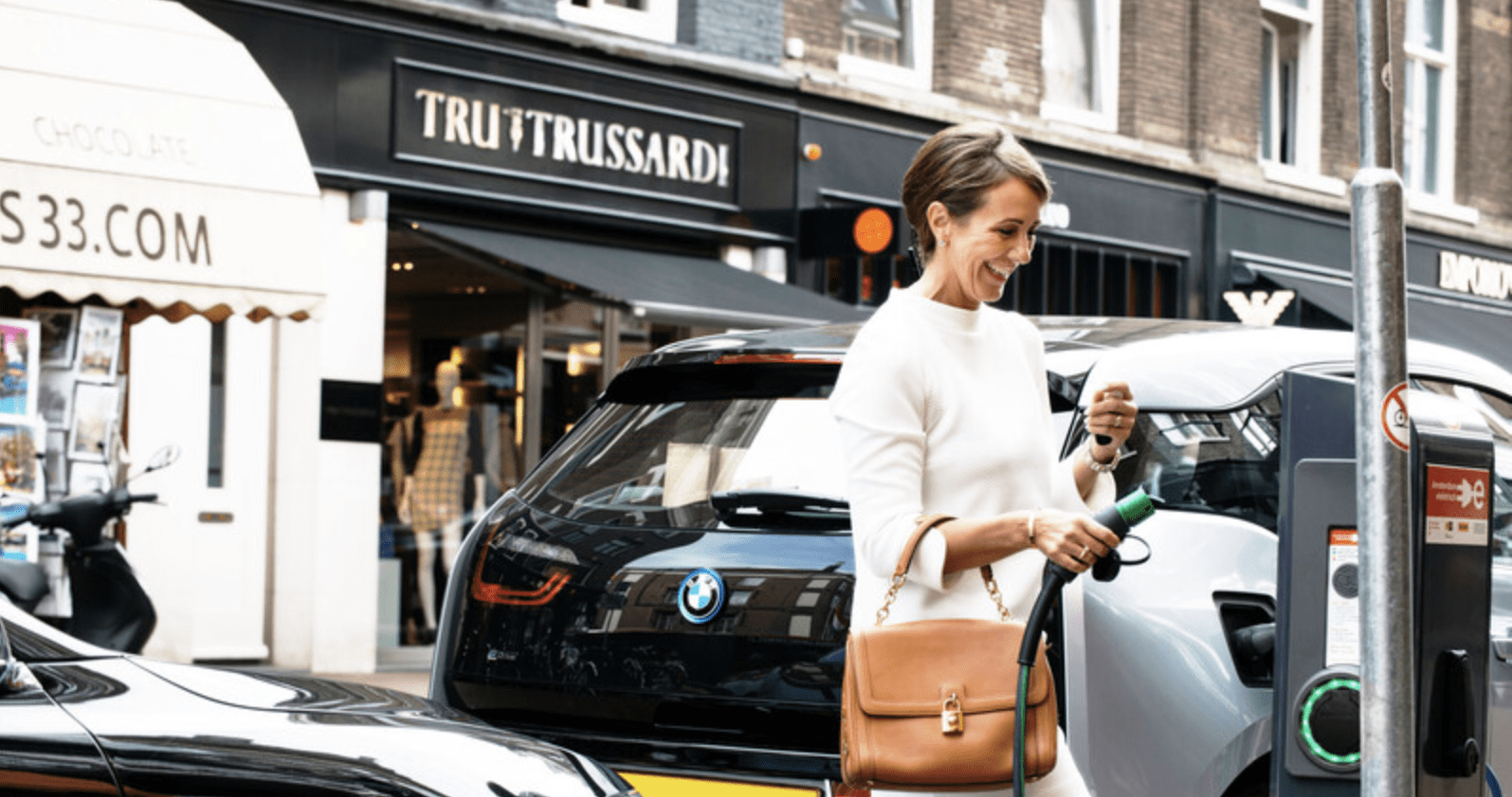
Unlike gas-powered cars, where filling up the tank requires an intentional visit to a gas pump, EVs open up what’s called opportunistic charging, or the ability to charge at a location because it offers charging possibilities rather than out of pure need.
Retail and hospitality venues, such as shopping centers, movie theaters, hotels, and restaurants, are perfect places for EV drivers to top up their cars while they spend time at the facilities.
This convenience drives 26% of EV drivers to regularly charge at supermarkets and another 22% to regularly charge while shopping at malls and dining out.
Public EV charging
Sometimes, you might just have to charge your EV while you’re away from home and work, but you might not be able to find retail or hospitality facilities that offer charging. Alternatively, depending on your home, you might not be able to install an EV charger, and you might not have access to one at work, either. This is where public EV charging comes in.
Public chargers are accessible by everyone and are commonly found in roadside public parking spaces or parking garages. They can be used by anyone in exchange for a fee, although you might need for sign up to a service or create a new account.
Public chargers are also critical for long-distance travel with EVs, where stopovers are required to replenish an electric car’s range. For all these reasons, 31% of EV drivers regularly use public chargers.
2. Different charging levels explained
Different levels means different results
You might not realize it, but not all EV chargers are created equal. One of the main differences between charging stations is how much power they can provide, which, in turn, impacts how fast they can charge your car.
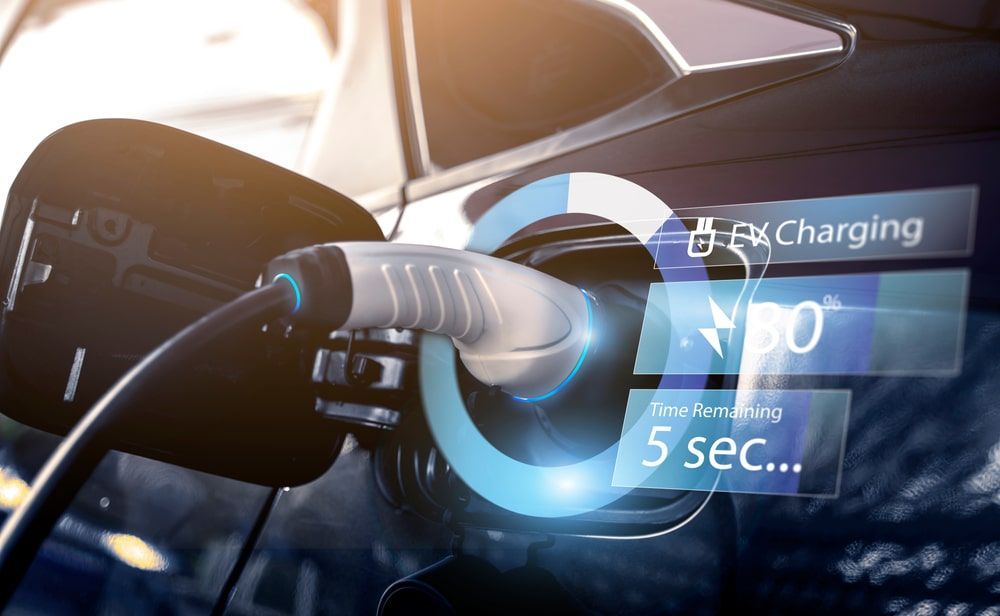
EV chargers are classed into three levels depending on how much power they deliver. We’ll explore each level in more detail below, but first, we need to understand the difference between AC and DC power.
Alternating current (AC) vs. direct current (DC)
Other than being a famous band name, AC/DC refers to the two different types of electrical current.
Most of our electrical infrastructure runs on alternating current (AC), where, as the name suggests, the flow of electricity alternates a number of times a second. AC is much more efficient for transmitting over long distances and is the type of current that flows from your socket at home.
Direct current (DC), by contrast, flows at a fixed rate and is the type of current used by electronics and batteries.
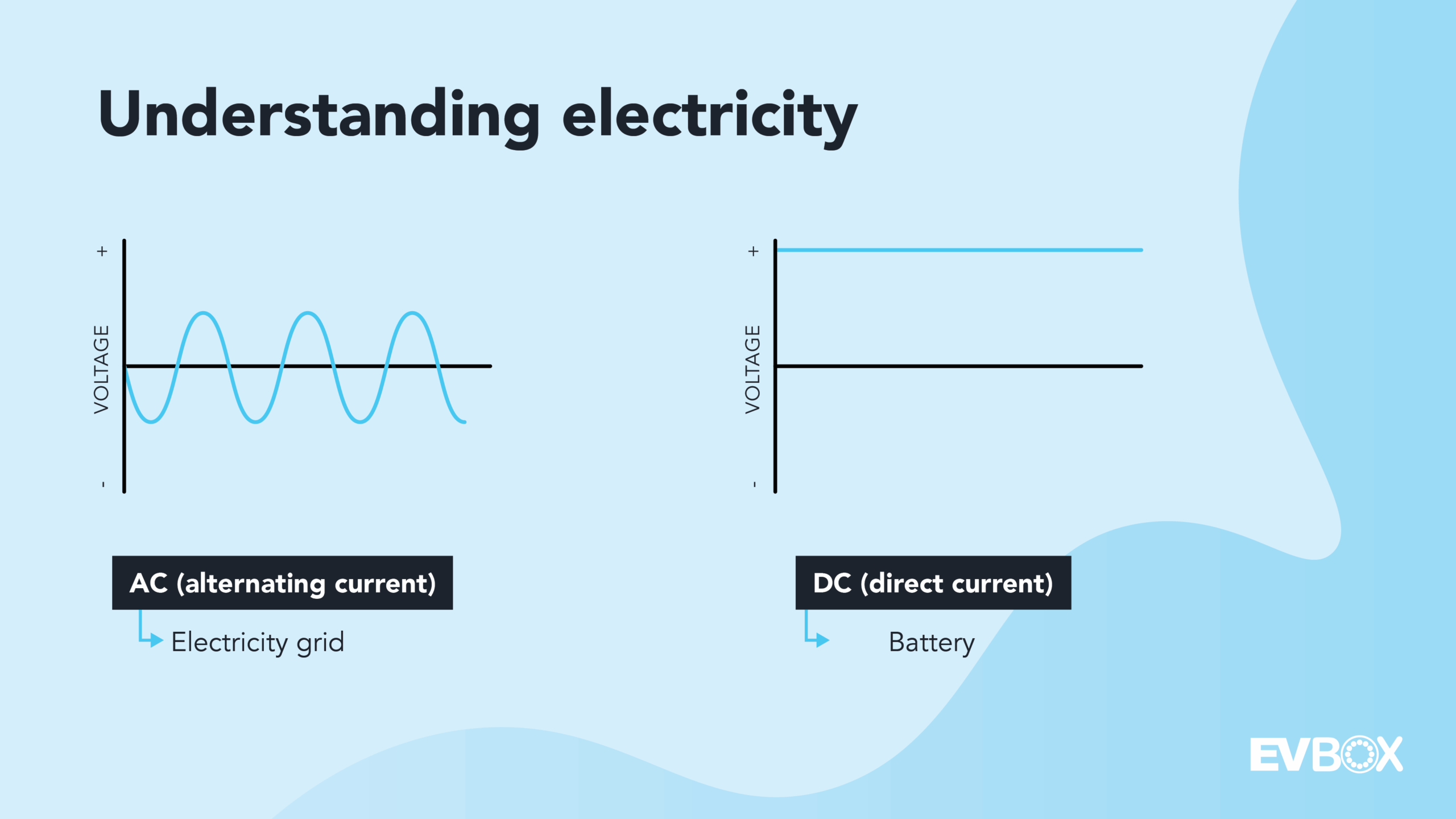
So, what does this have to do with electric vehicle charging? Well, your EV will always use DC to store energy in its battery, but charging stations vary whether they provide AC or DC. Chargers at levels 1 and 2 output AC, and your vehicle’s onboard converter transforms it into DC. Chargers at level 3, however, provide DC power that is fed directly into your car’s battery, bypassing the slower onboard converter.
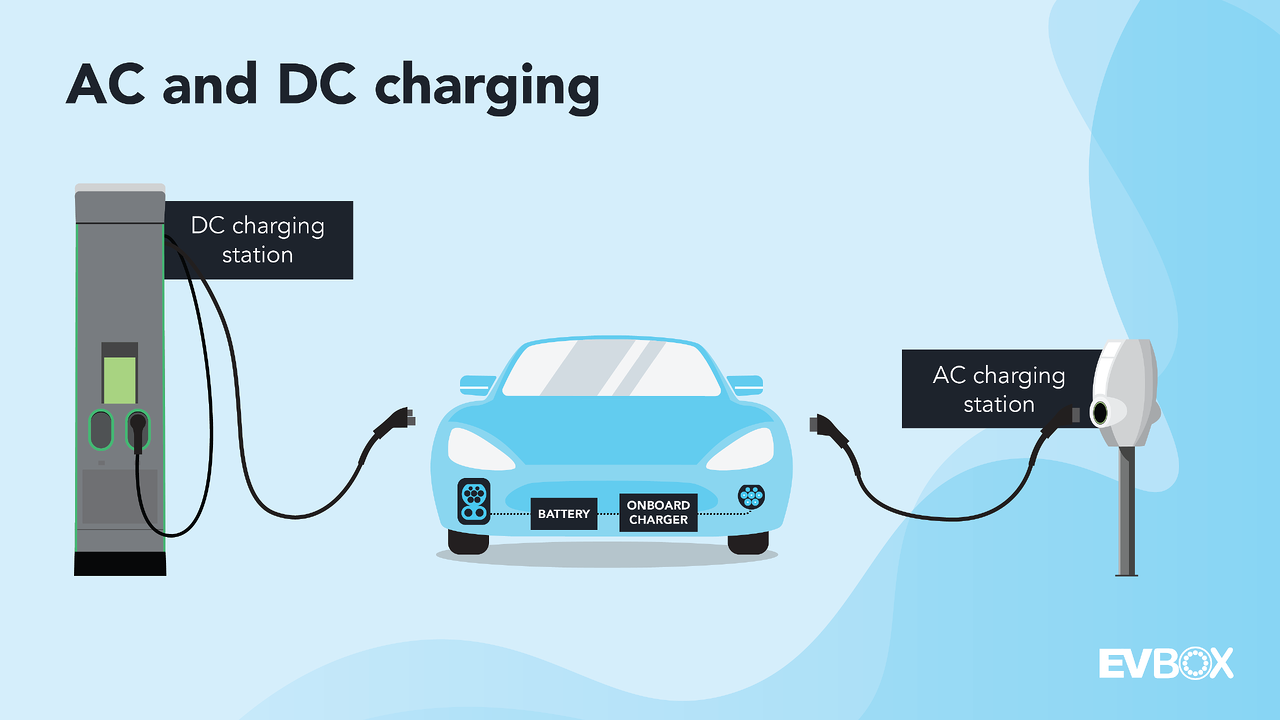
Level 1 charging
Level 1 charging is by far the slowest but also the most accessible way to charge an electric car. It refers to charging from a standard home outlet using the dedicated cable that came with your EV.
Because it relies on a standard socket, it’s limited in how much power it can provide, at around 2.3 kilowatts (kW). In other words, level 1 charging will replenish about 4 to 5 miles (6 to 8 kilometers) range per hour, so it would take around 20 to 25 hours to charge your car enough for 100 miles (160 kilometers) of range.
Given that it lacks any specific protections, level 1 charging is also the least safe and the most likely to overwhelm your home’s electrical circuit.
Level 2 charging
Level 2 charging uses a dedicated EV charging station specifically wired into a building’s electrical circuit to draw higher power. This is the level of home EV charging stations and most public chargers.
A level 2 charger can draw anywhere from 7.4 to 22 kW of power, making it about 5 to 15 times faster than a level 1 charger. Depending on its power output, a level 2 charger can replenish anywhere from 25 to 75 miles (40 to 120 kilometers) of range per hour.
And because a level 2 charger is specifically wired into a meter box with dedicated circuit breakers, it tends to be much safer to operate at high loads than a level 1 charger.
Level 3 charging
Level 3 charging stations are by far the fastest and tend to be the level most people refer to when talking about fast charging. Unlike level 1 and 2 charging, level 3 charging feeds direct current into an EV’s battery, bypassing the slower onboard converter that limits the charging speed in the previous levels.
This means it requires an external converter to transform the alternating current provided by the grid into DC. Because of this, and due to the power they handle, level 3 charging stations are typically much larger than levels 1 and 2. In fact, you wouldn’t be able to install a level 3 charger at home, as your electrical supply can’t deliver the required loads.
Fast chargers’ power output ranges anywhere between 50 and 350 kW, with new 400 kW charging having been launched recently. The fastest level 3 chargers can fully charge an EV in as little as 15 minutes, although this varies based on the car’s charging capabilities.
3. How to charge an EV at home?
Even when charging at home, you still have options
We’ve seen above that the home is the most popular place to charge an EV, thanks to its convenience and cost-efficiency. But how exactly do you go about charging your EV at home?
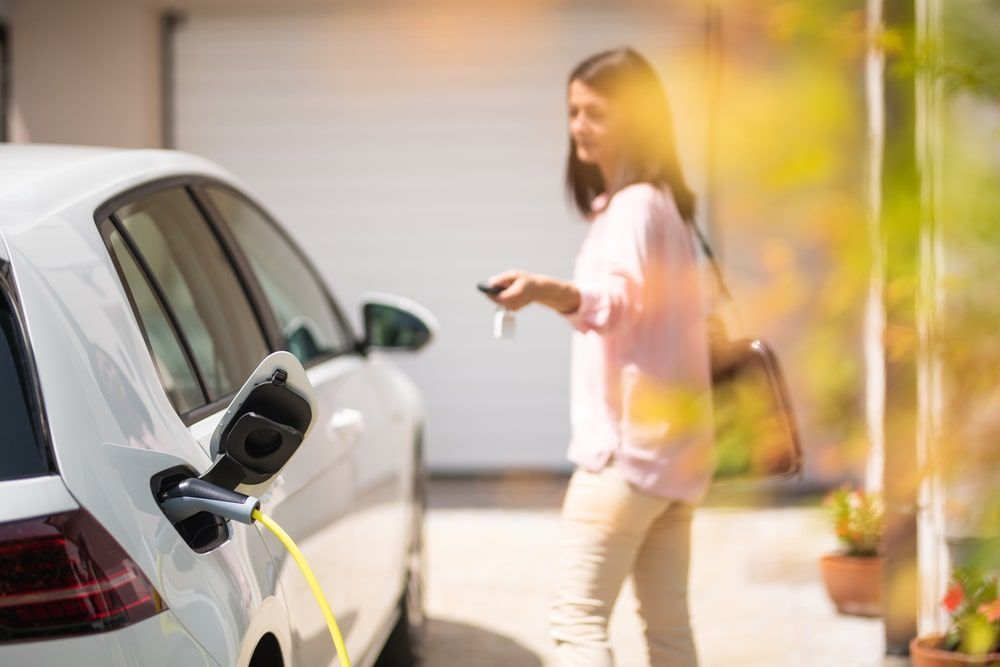
Broadly speaking, there are two main approaches to charging at home: with or without a dedicated home charger. Let’s look at each in more detail below and explore their advantages and disadvantages.
Charging without a dedicated home EV charger
Charging your EV at home without a charging station can be as simple as plugging the cable that came with your car into a standard socket. That said, this method is incredibly slow and can create a risk of potentially dangerous overloads.
To give you an idea of charging speed without a dedicated home charger, a standard 2.3 kilowatt (kW) home power outlet would take about 24 hours to charge up a medium EV with a 50 kWh battery (such as a Tesla Model 3 Standard Range) to 80 percent.
Besides being slow, this method can be dangerous to your home and yourself, as there are no protections other than your plug’s fuse against a power overload.
So while charging without a dedicated charger is an option, you’ll probably want to consider installing a dedicated home EV charger if you’re going to be charging your car at home regularly.
Charging with a dedicated home EV charging station
A home charging station is designed and specifically wired into your home’s electrical circuit to handle much higher loads than a standard outlet, allowing it to charge your EV much faster.
Depending on its power output, a home charger can fully charge a medium-sized EV within 3 to 7 hours, and even the slowest charging stations will be able to charge your EV fully overnight.
So how exactly do you use a home EV charger? While the specifics vary between charging stations, it will generally follow the following four steps.
- Getting the charging cable. The first step is locating the charging cable – this is often built into the charger, but you might sometimes need to use your own, which is provided by your EV’s manufacturer.
- Plugging the car in. Once you’ve located the cable, you need to plug it into your EV’s socket, usually located on the front or either side of the car. If you’re using your own cable, you’ll have to plug this into the charging station as well.
- Starting the charging session. If your charger is in a private driveway or garage, it will often start charging your car automatically as soon as it’s plugged in. For chargers shared with other users, such as in an apartment complex, you might have to authenticate yourself using an RFID card or fob or through an app before you can start charging.
- Ending the charging session. How you end the charging session depends on how you started it. If you used an RFID card, fob, or app, you’ll need to swipe it or stop charging through the app. Regardless of the method, remember that the cable is usually locked to the car during charging to prevent theft, so don’t try to unplug it before stopping the session.
4. How to charge on-the-go
Explore your options when charging in public
Charging at home is certainly the most convenient for day-to-day use, but EVs also unlock much greater freedom as they can be charged in a range of locations.
Public EV chargers are dotted around cities and can often be found in parking spots, restaurants, or shopping centers. So, how exactly do you go about using one, and what are some aspects to consider?
How to find public EV charging stations?
Before thinking of how you use one, the first step is actually finding a public charging station. Unlike gas stations, which are common and prominent sights along our roads, public chargers can often be tucked away at the back of a parking garage or on the side of a road.
As such, you’ll probably want to download an EV charging station finder that can show you nearby charging stations as well as useful information about their availability, power output, costs, or amenities.
When looking for a public charging station, it’s worth taking a second to consider your priorities. For instance, how fast do you want your EV charged, and how much are you willing to pay?
Fast charging is usually more expensive, but the added cost can be worth it if you’re on a long-distance trip. Alternatively, AC charging is slower but might meet your needs perfectly if you’re just looking for a quick top-up.
How to pay at public EV charging stations?
Unlike a home charger, where your electricity consumption is simply added to your home’s bill, you’ll have to arrange payment for your public charger use to the charge point operator.
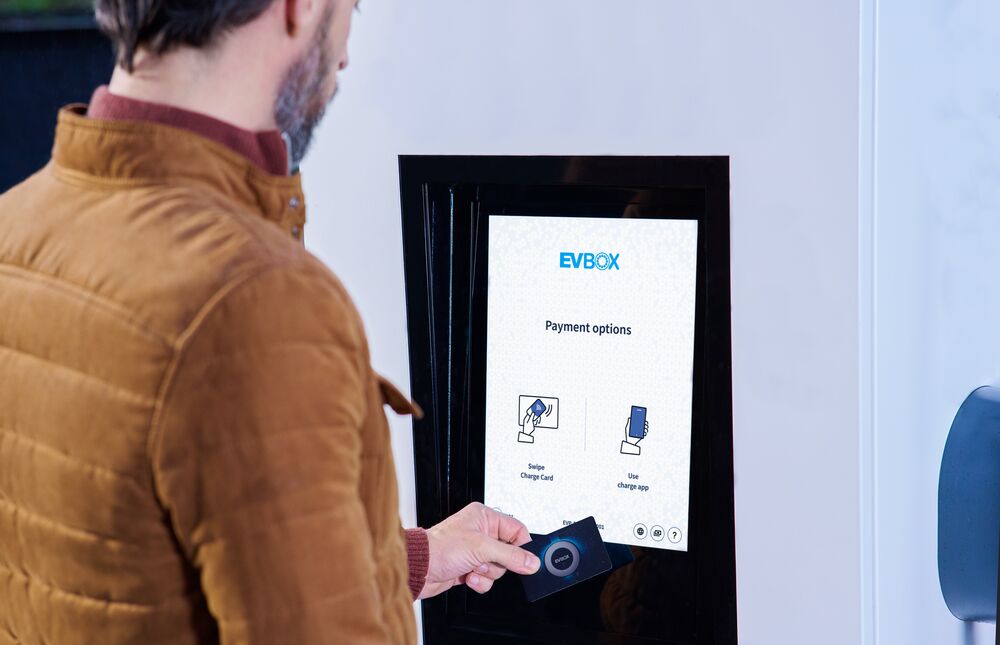
Broadly speaking, you can pay for public EV charging in two main ways. The first is to sign up for an account or membership with a charge point operator or mobility service provider. You can then control the charging session using a keycard or fob, sometimes even through a dedicated app, and any fees are added to your account and billed to you later.
The other option that some public charging stations offer is to pay as you go using your credit or debit card. This unlocks greater flexibility as you’re not tied to a single network or service provider, but many operators charge a higher rate for non-members, so you should expect to pay a premium for the convenience.
How to use a public charging station?
So how do you actually go about using a public charging station? While the general steps are the same as with a home charger, public chargers require you to authenticate yourself to arrange payment.
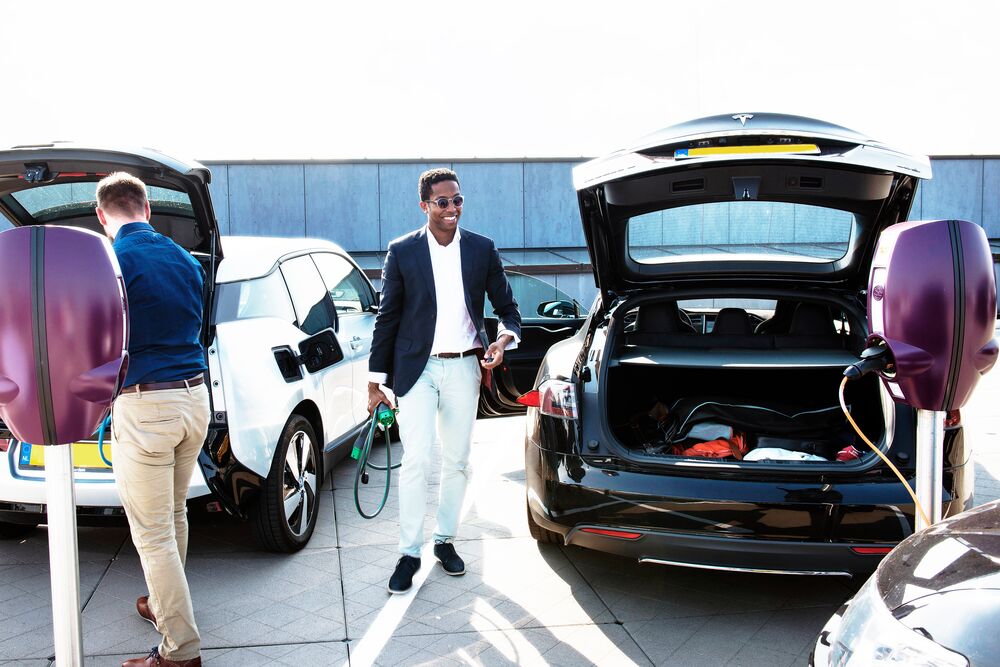
- Get the charging cable. Whereas home chargers often have a built-in cable, it’s more common for public charging stations to require you to bring your own. Usually, your EV’s manufacturer will provide a suitable public charging cable for your region, so it’s worth always keeping it in your car’s trunk.
- Connect the car to the charger. If the cable is built-in to the charger, you just need to connect it to your car’s charging port, often located on either side or under the badge at the front. If you’re using your own cable, you’ll have to plug this into the public charging station as well.
- Connect the car to the charger. If the cable is built-in to the charger, you just need to connect it to your car’s charging port, often located on either side or under the badge at the front. If you’re using your own cable, you’ll have to plug this into the public charging station as well.
- Authenticate and start the session. To start the charging session, you’ll need to provide some way to authenticate yourself to the charger to arrange payment. This is usually done with a keycard, fob, or a dedicated smartphone app, while some stations allow you to pay directly by debit or credit card. Once you’ve authenticated yourself, charging will begin.
- End the charging session. When you’re ready to end the charging session, you can swipe your card or fob again or stop it through the app. Once you’ve stopped charging, the cable will unlock, and you can place it back on the charger or your car’s trunk.
5. How to use a fast charging station?
Fast charging made easy
Despite most EVs’ often touted fast-charging capabilities, fast charging is unlikely to be an everyday experience for most EV drivers. Still, it’s an essential piece of the electric mobility landscape and allows EVs to be practical for long-haul travel.
But what exactly is a fast charging station, and how do you use one?
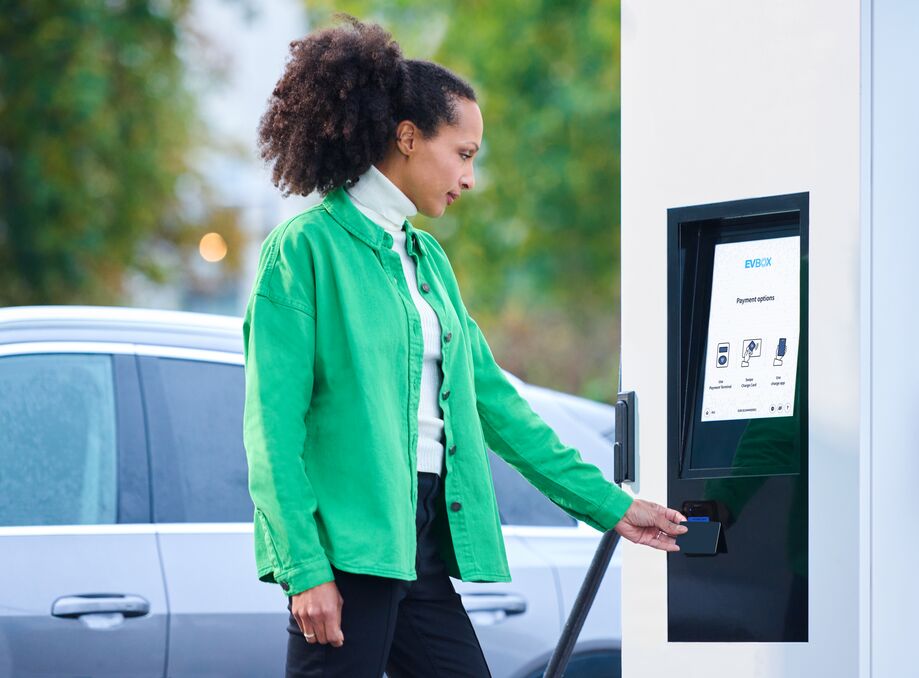
What is fast charging?
Referring back to the charging levels discussed earlier, fast charging is level 3 or DC charging. It delivers a high-powered current that can charge your EV in minutes instead of hours.
Compared to a typical home charger that usually delivers 7.4 or 11 kilowatts (kW), a fast charging station can output anywhere from 50 to 400 kW and charge an EV fully in as little as 15 minutes.
How to use a fast charging station?
At a general level, the steps in using a fast charging station are very similar to the ones for any other public charger. While fast chargers very, they usually share the below steps.
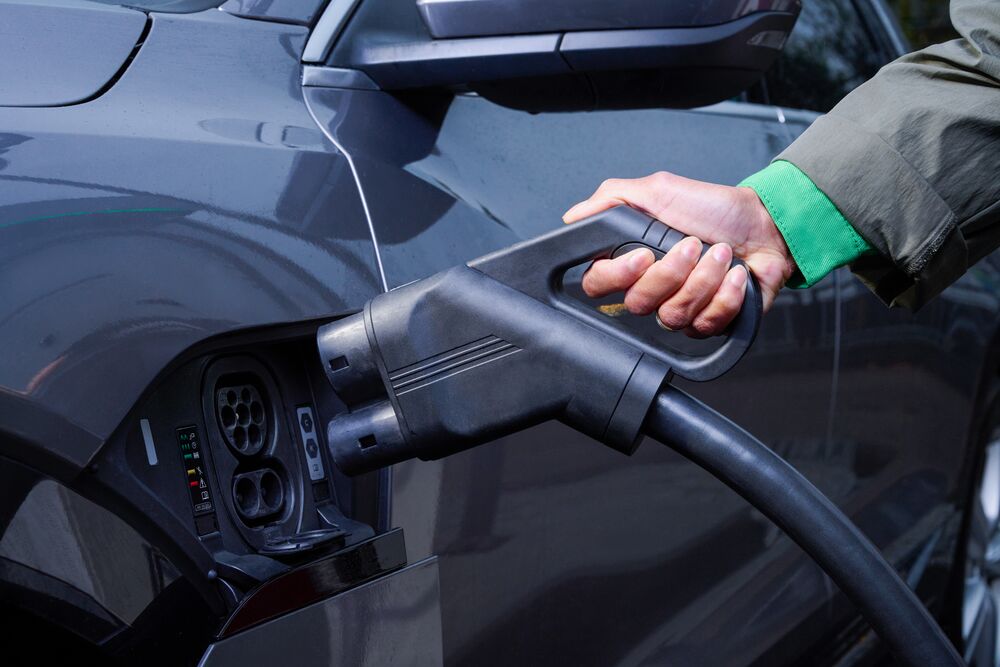
- Locate a fast charging station. Because of the power they require (and the investment to build them), fast chargers aren’t as common as other types of public chargers. Using a charging station finder can help you locate nearby fast chargers and filter them by power output.
- Get the charging cable. Unlike other public chargers, fast chargers will always have a built-in, non-removable, and much thicker cable. This is because of the considerably higher current they carry, which also often requires active cooling within the cable.
- Connect the car to the station. Compared to home and other public chargers, fast charging often uses a different connector, which is usually bigger than the regular AC charging port. This fast charging port is generally located in the same place and is frequently just an extension to the AC charging port, sometimes hidden by a flap.
- Authenticate and start the session. Like other public chargers, you’ll have to authenticate yourself using a keycard, fob, or app before you can begin the session. Note, however, that fast charging usually comes at a premium, so expect to pay more than your regular public charger.
- End the session. To end the charging session, simply swipe your card or fob, or use the charging app to stop charging. Keep in mind that you can’t just take out the charging cable without ending the session, as it is locked onto your car.
6. How to pay for electric car charging
Paying to charge your EV doesn’t have to be complicated
Whether on the road or at home, the common experience across all EV charging is payment – while there are some situations you might be able to charge for free, such as at a hotel or restaurant that offers complimentary charging for patrons, in the vast majority of cases, you’ll have to arrange payment in some way.
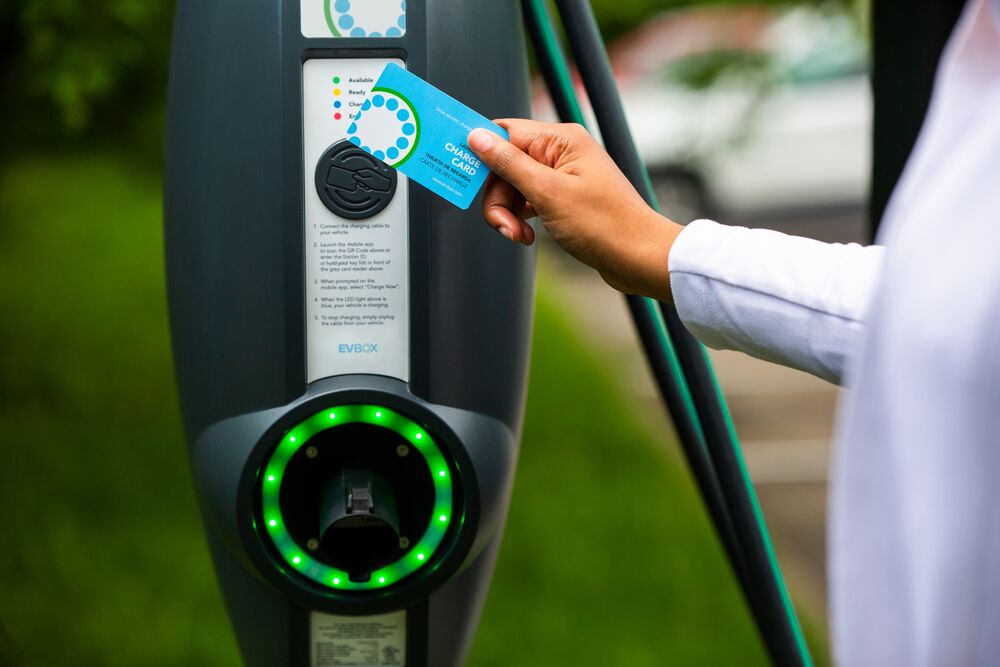
Broadly, how you pay for EV charging can be broken down by where you charge: at home or on the go. Let’s have a look at the practicalities of paying for charging in each of the two situations.
Paying for EV charging at home
Home EV charging is a popular option for drivers, thanks to the convenience of coming home and waking up to a fully charged car. Beyond being the most convenient, it also tends to be the most cost-effective way to charge an EV.

This is due to the fact that home EV chargers are wired into your home’s electrical circuit, so the energy they use is tracked by your meter and added to your electricity bill. As such, you don’t pay any extra fees or membership costs on top of the standard kilowatt price of electricity.
On top of already being cost-efficient, you might be able to reduce costs further by leveraging off-peak tariffs and scheduling charging during quieter hours, for instance, at night.
Paying for EV charging on the go
Paying for public charging can be less straightforward. While public charging stations vary in how much they cost to use and how you pay for them, you’ll almost always have to authenticate yourself to arrange payment for your electricity consumption.

How you authenticate – and thus, how you pay – can vary, but there are currently three main ways.
Paying via an app
One of the most common ways to pay for public charging is using a smartphone app that allows you to find, connect, and authenticate yourself to public chargers. Usually, these apps are part of a charging network and are often provided by the charge point operator.
Payment through these apps usually requires an account and can either be done with a subscription, where you pay a discounted price per kilowatt-hour (kWh) in exchange for a monthly fee or paying as you go, which tends to cost more per kWh but requires no upfront fee.
Regardless of which method you use, charging costs are either directly debited from your bank account or credit card or billed to you at the end of each month.
Paying using an RFID card/key fob
A similar option that doesn’t require a smartphone app is authenticating through an RFID key fob or card. Like a charging app, however, this requires an account with a charge point operator, who will issue a card or fob with your authentication information.
Once at a charger, you simply swipe or tap your card or fob to begin charging. You then repeat this to end the session, and the charger will know where and how much to bill you.
How you pay is much the same as with a charging app, either through a membership or paying as you go, with payment being taken directly from your account or billed to you periodically.
Paying using a contactless credit or debit card
The option that requires the least setup or commitment is paying using a contactless bank card. While not every public charger has this option, some come with a contactless card reader that allows you to start a charging session with the tap of a credit or debit card.
With no accounts or memberships needed, this can be advantageous when traveling outside of your home charging network or if you only charge on the go occasionally. Remember, however, that you’re likely to pay a higher price in exchange for the convenience.
7. Different charging cables and plugs
Different chargers for different situations
Unlike gas cars, which can be filled using the same type of pump at any gas station, the EV charging landscape is a bit more complex. Charging cables and plugs differ by manufacturer and region, and charging on the go is often not a one-size-fits-all situation.
On top of that, many cars use slightly different (or different versions of) plugs for AC and DC charging. Let’s have a look at them below.
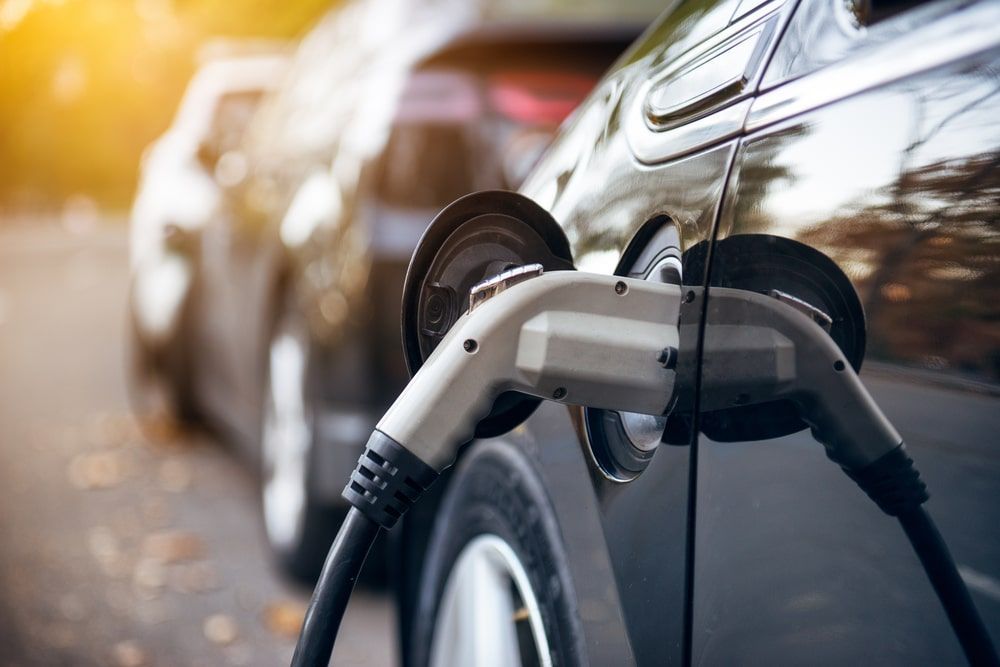
AC charging plugs
There are three global standards for AC charging plugs – types 1 and 2, and GB/T. Type 1 plugs are used in Japan and North America and deliver single-phase power, which limits their output to a maximum of 7.4 kilowatts (kW).
Type 2 plugs are the official standard in the European Union and common in the rest of the world. They are sometimes called Mennekes after the German company that originally designed them. Unlike type 1 plugs, they are three-phase, allowing them to carry higher power, up to 22 kW.
Finally, China developed its own system called Guobiao national standards, usually shortened to GB/T. While this uses a nearly-identical physical connector to the European Type 2 plug, the communication standard between the plug and the vehicle is different and incompatible with European Type 2 chargers.
| Plug type | Design | Power output* | Locations |
| Type 1 |  | Up to 7.4 kW | Japan and North America |
| Type 2 |  | Up to 22 kW for private chargingUp to 43 kW for public charging | Europe and the rest of the world |
| GB/T |  | Up to 7.4 kW | China |
*These numbers represent the maximum power output that a plug can deliver at the time of writing this article. The numbers do not reflect actual power outputs as this is also dependent on the charging station, charging cable, and the receptive vehicle.
DC charging plugs
Like AC plugs, DC fast charging connectors also vary between regions, with 4 main types. The two most common ones, used in North America and Europe, are versions of the Combined Charging System, or CCS, respectively CCS1 for North America and CCS2 in Europe.
As the name implies, CCS plugs incorporate type 1 or 2 AC charging plugs, with an added section that allows high voltage current to feed directly into the battery during fast charging. This physical structure enables CCS to output up to 350 kW, assuming the charger and car both support it.
Another prominent plug type is the Japanese CHAdeMO standard, used by some Japanese EVs to enable DC charging. While this type of plug is becoming less and less common outside of Japan, with most manufacturers transitioning to CCS, some older EVs, and certain models still use it.
China’s GB/T charging standard also enables fast charging using the same AC connector and delivering up to 237.5 kW. That said, GB/T is developing a new version of the standard that would allow charging speeds of up to 500 or even 900 kW.
| Plug Type | Design | Power output* | Locations |
| CCS1 |  | Up to 350 kW | North America |
| CCS2 |  | Up to 350 kW | Europe |
| CHAdeMO |  | Up to 200 kW | Japan |
| GB/T |  | Up to 237.5 kW | China |
*These numbers represent the maximum power output that a plug can deliver at the time of writing this article. The numbers do not reflect actual power outputs as this is also dependent on the charging station, charging cable, and the receptive vehicle.
Tesla charging plug
Besides the above standard connectors, another one worth mentioning is Tesla’s proprietary charging plug, used by the carmaker on all of its models sold in North America.
Tesla’s connector can be used on its Supercharger network but is not compatible without an adapter with any other charging standard, including Type 1 and CCS1, limiting the number of public charging options for Tesla owners in North America.
8. Six reasons your electric car isn’t charging as fast as you’d expect
Make the best out of your battery
Have you ever found yourself at a charging station expecting your EV to be charged only to find out it’s still far from full? This is a common situation, and while frustrating, there are good reasons why your electric car isn’t charging as fast as you’d want. Let’s take a look below at 6 common reasons why your EV is charging slower than you’d expect.
1. Maximum charging capacity vs. maximum power output
Perhaps the most common reason your EV isn’t charging as fast as you’d want it to is because of a limitation to either the power output that a charger can provide or that your car can handle.
To illustrate this, let’s imagine you arrive at a DC fast charger with an advertised power output of up to 350 kW. You plug in and start charging but notice the charging power seems to top out at around 150 kW. In this situation, this is most likely your car’s maximum charging capacity, meaning it can’t accept any higher power outputs than 150 kW, even if the charger could provide more.
This can also apply the other way around if the charging station’s maximum power output is lower than what your car can handle. For instance, the Hyundai IONIQ 5 can accept up to 350 kW DC fast charging, but many charging stations can only provide up to 150 or 200 kW.
It’s also worth noting that this restriction in power output is not limited to fast charging. AC charging can also be impacted by this mismatch, although this may be less noticeable given the comparatively smaller differences (for instance, a limit of 7.4 kW instead of 11 kW).
2. State of charge
Beyond power output, one of the other main limiting factors is a battery’s state of charge (SoC), simply put, your EV’s battery percentage. Because of the way battery chemistry works, charging a lithium-ion battery is not linear – depending on its state of charge, a battery can take more or less energy.
As a rule of thumb, the lower the SoC, the more power a battery can take in, and as a result, the faster it can charge. As the battery gets closer to full, its ability to take in energy decreases, and charging has to slow.
You might have experienced this phenomenon if you’ve tried charging your EV (or any other electronic device with a lithium-ion battery) from 80 to 100 percent and noticed it took much longer than charging from, say, 40 to 60 percent.
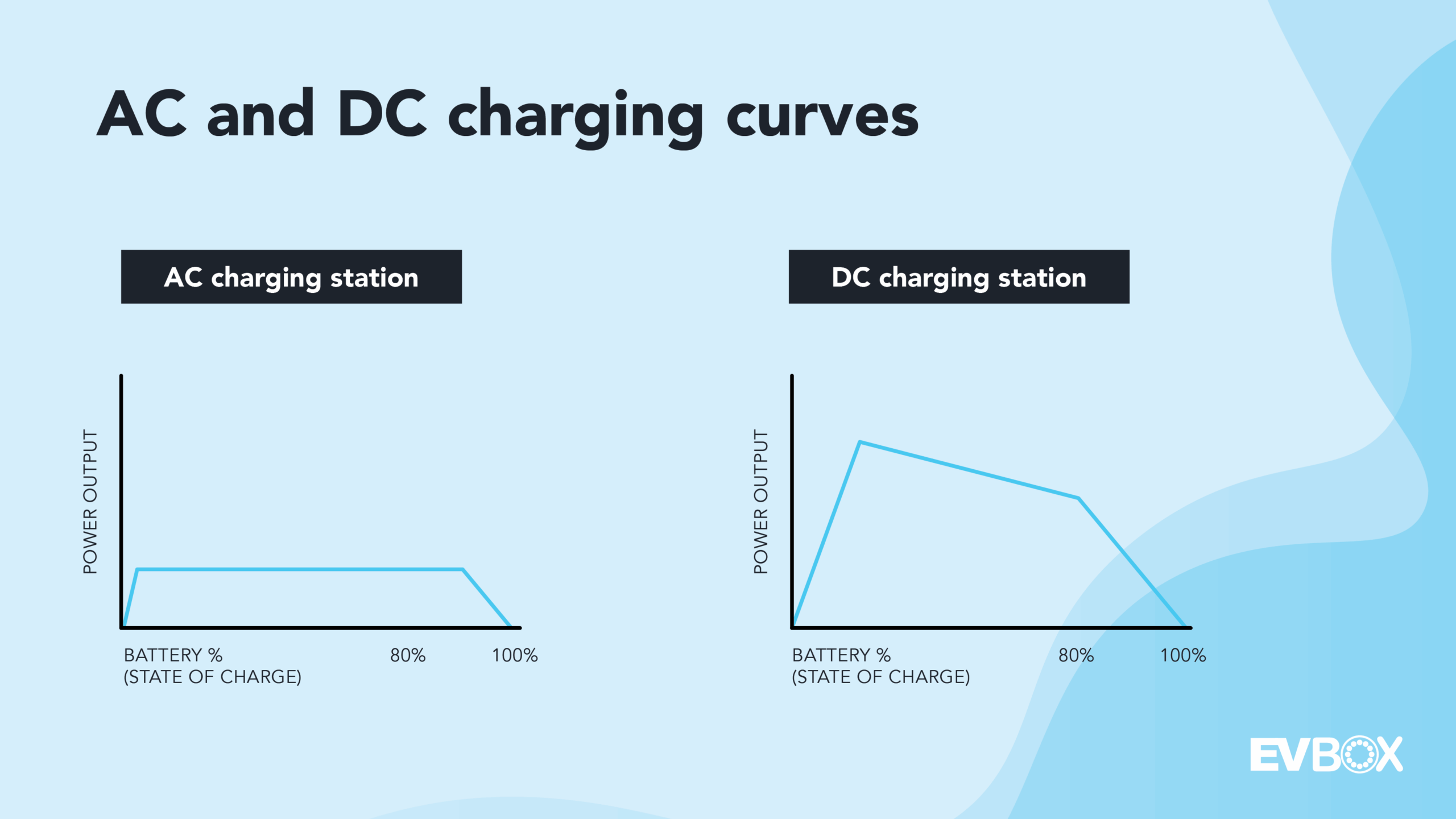
3. Simultaneous charging
Beyond power output and the state of charge, another factor that can prolong charging time is if multiple EVs share the same power source. This might not be obvious at first glance, but multiple charging stations can often be wired into the same power source, meaning the output they provide is shared between however many vehicles are connected.
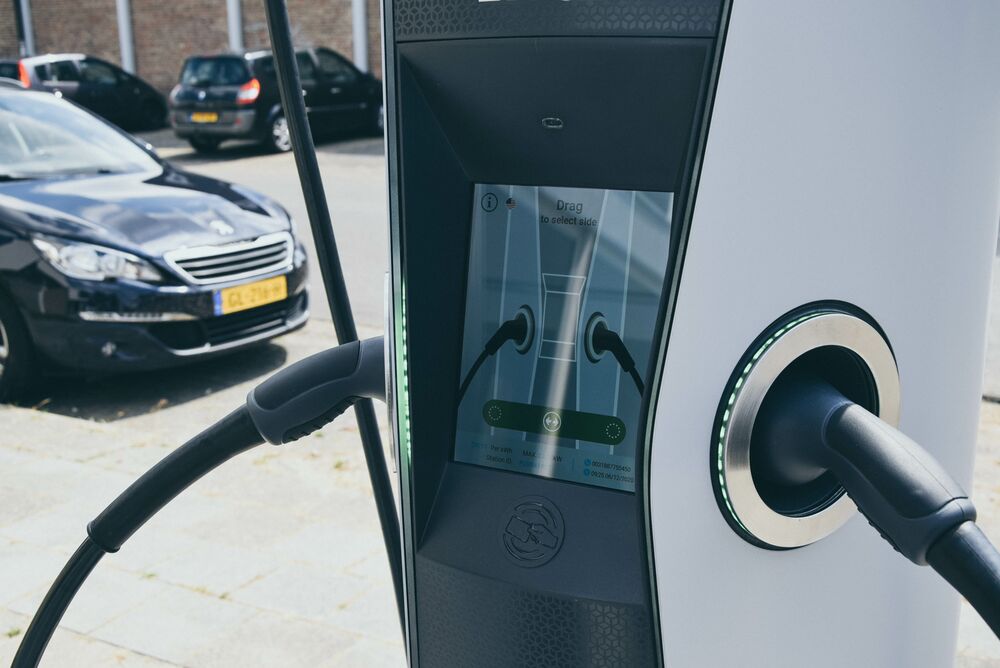
This can often result in much slower charging, as your car can only use half (or even less) of the charger’s advertised power output. If you have the option, it’s worth choosing the charging station with the fewest or no other vehicles connected to ensure you get the highest possible speed.
4. Battery temperature
Batteries are complex electronic devices that operate ideally within a narrow range of temperatures around 20°C. Any significantly higher or lower temperatures will decrease the battery’s performance and require more active cooling or heating to get the battery close to its optimal range, reducing efficiency and decreasing range.
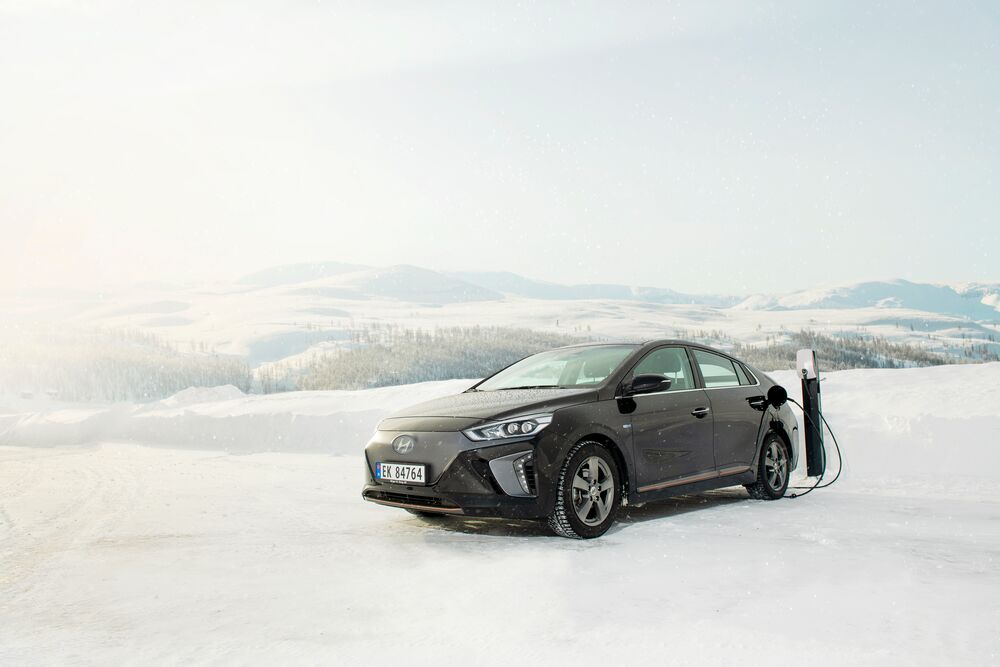
Both very high and very low temperatures will also impact the rate at which your car charges. In cold weather, the battery’s ability to take in electricity is reduced, so charging has to be done at a lower power output and slower rate.
In summer, the heat generated by the battery while charging can overheat it, so the car’s battery management system (BMS) will often reduce the charging rate to protect the battery.
5. Sitting in your car while charging
It might be obvious once you think about it, but staying in your car while it’s charging can often noticeably prolong how long it takes to charge. Even without driving, an EV idling can have many energy-intensive processes on, such as the lights, the sound system, heating or air conditioning, to name a few. These can all add an extra load on top of the car’s charging which prolongs charging time.

6. Battery health
While your EV’s battery health is unlikely to be a concern for many years, with the average EV battery lasting between 15 and 20 years, batteries do slowly age and lose some of their capacity in the process. Beyond capacity loss, older batteries also have a higher resistance, meaning the power they can accept – and thus, the charging rate – decreases.
That said, many EVs come with a buffer in the form of excess capacity that counters some of the losses due to aging, making the decrease in capacity and charging speed barely noticeable to drivers for many years.

Charging an EV is part of the future – and the future is electric
Charging an electric car is still a new and unfamiliar experience for many people and can seem daunting compared to the familiarity of the gas pump. That said, EVs can unlock tremendous flexibility by being able to charge in countless locations, from the home to supermarkets and public parking garages.
If you’re looking to buy an EV, or have just bought one recently, you might want to consider home EV charging as a practical, convenient, and cost-efficient solution for day-to-day charging. To learn more about home charging and all its nuances, have a look at our dedicated home EV charging guide.

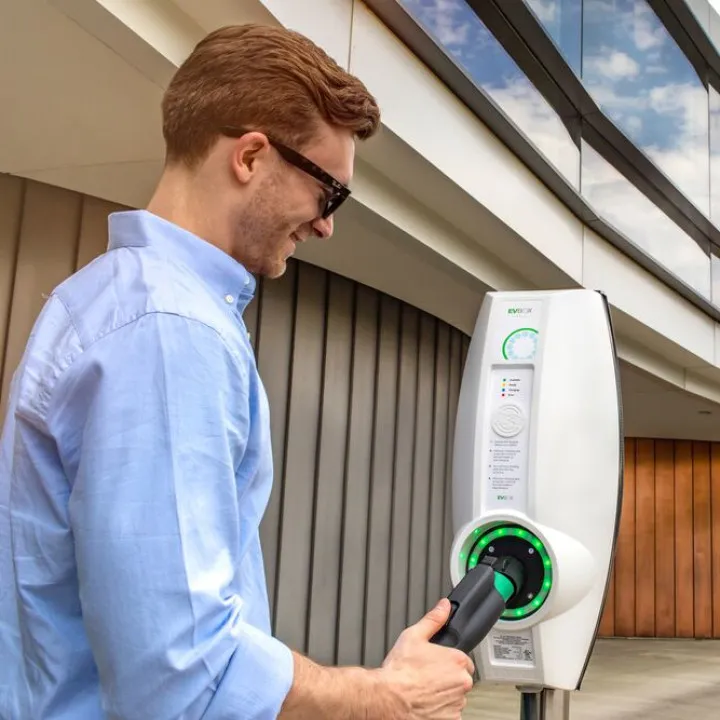

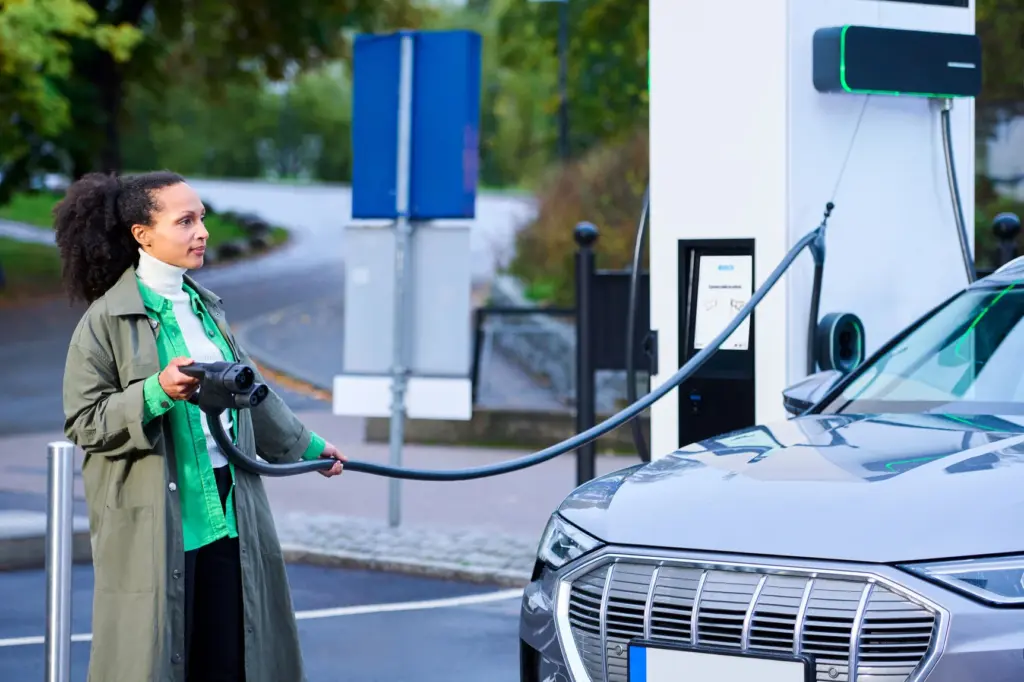
![How far can an electric car go on one charge? [May 2023 updated]](https://evbox.com/app/uploads/2025/09/shutterstock_2115845192-min.webp)